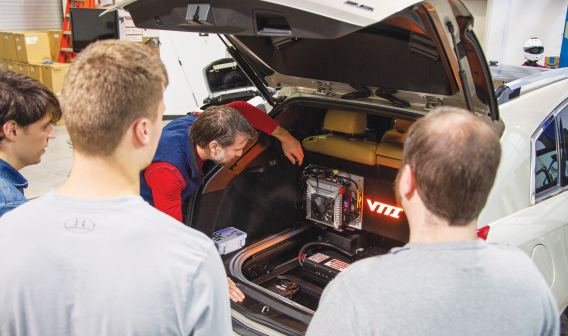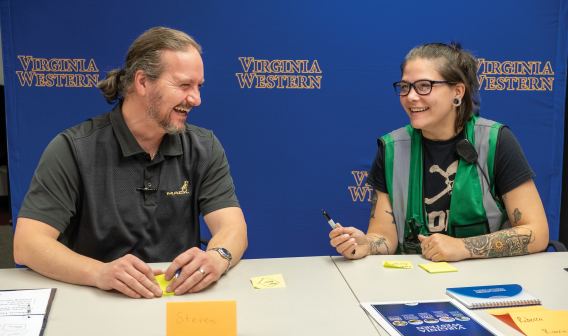VER: How soon do you think we’ll have a sense of how big this could become? Is it the next three years?
Langford: Well, it’s moving pretty fast. Boeing has made a big commitment to this. They set up a new division called Boeing NeXt to focus on it. Aurora is building NeXt’s Passenger Air Vehicles.
VER: What do you think states and regions could do to better position themselves to retain and attract manufacturing investment in the future, both to support their existing companies and attract new investments?
Langford: The number one thing is clearly education. An educated workforce in the areas we’re talking about is by far the most important thing. This is not a competition for low labor cost. This is competition for people who are well-educated and highly skilled.
VER: From your perspective, what do you think makes Virginia an attractive place for manufacturers like yours in aerospace?
Langford: I would say again it’s education. Virginia has a good education system, investment in K-12, the university systems. The workforce is the number one thing. It’s a very good, livable climate in the sense that it has everything from the ocean to the mountains, and so there’s a lot of choice in that. It has certainly been good for Aurora because of a supportive business environment. A business-friendly environment is key to any of this.
The city of Manassas has been exceptional. It has been a partnership of almost three decades. They took a chance on us when we were a very small startup, and they have been supportive all the way through in terms of facilities. They helped us find financing for putting up facilities, especially in the early days.
VER: We hear a lot about the skills gap in the U.S. Can you talk about what you think is driving that gap, and what states and communities could do to close it?
Langford: That’s the question everybody wishes they had the answer to. Obviously, it’s hard to come up with programs that really work, but it’s not just at the top-tier university levels. A lot of it goes right through the vocational network and the community colleges, and then laying the foundation in K-12 that can get kids into those tracks.
One of the things we’ve paid a lot of attention to as an industry is looking at apprenticeships, how the Europeans use a skill-based apprenticeship system, and how transferrable that might be to the U.S.
VER: What are the types of occupations or the types of skills that you have the most trouble keeping filled?
Langford: Anything related to robotics, perception, sensors, electromechanical actuators, software programming, machine language, machine learning, artificial intelligence. AI is the buzzword, but all the disciplines that go into that.
VER: What do you think we could do to get the word out about the economic importance of manufacturing to ensure that we really maintain and enhance our competitiveness for manufacturing projects, not just in Virginia but across the country?
Langford: People don’t have a good sense of what manufacturing means anymore. The other thing is people don’t realize how much manufacturing there still is in the U.S. It has really changed over the last couple of decades. The employment numbers have come down somewhat, not as much as I think people imagine they have, but somewhat. The solution to manufacturing in the United States is training to have a high-skill workforce and keep all the high-value stuff in the country, and automating the low-skill stuff.
Pretty much every industry has a pretty high-tech end of it, whether it’s pharmaceuticals, printing, making cars, or any of that. That’s why the whole education thing is important. Starting very early and raising awareness of what it really means to have a modern manufacturing economy.
VER: Do you see a future for personal vehicles where the point-to-point costs could be comparable to commercial travel?
Langford: Yeah, definitely. They won’t make it if it can’t get to that point. We certainly believe that that’s where this autonomy comes in because this stuff has to be extremely safe, and it has to be highly automated in order for all of this to work.






